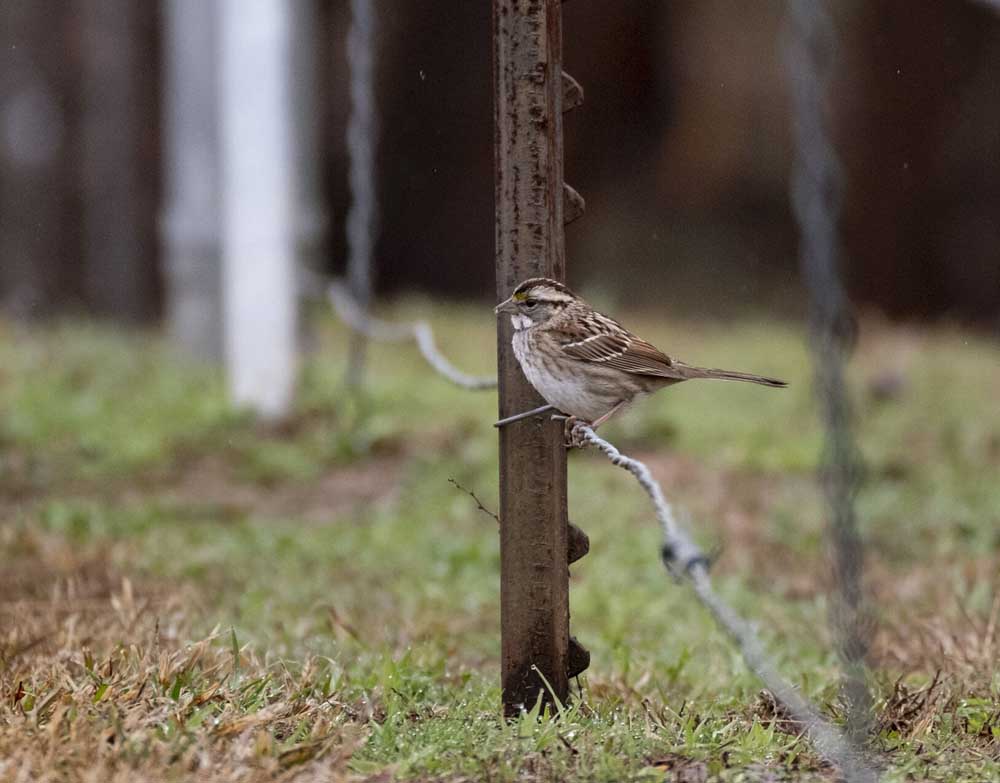Extreme winter weather continues to affect area’s wildlife
Published 3:04 pm Saturday, February 27, 2021

- A bird is seen perched Friday along Loop 281 near Pine Tree’s Pirate Stadium. The record February snowfall in Longview and this past week’s winter storm have left an impact on the area’s wildlife.
The record February snowfall in East Texas and this past week’s winter storm have left an impact on the area’s wildlife.
“One of the most important things to note is that it could be some time before we know the full impact of this weather on our state’s natural resources, and our staff are continuing to work on this,” said Texas Parks and Wildlife Department spokeswoman Megan Radke.
The department’s staff continue to receive reports of dead birds, including waterfowl. Insectivorous, or insect-eating, and nectivorous, or nectar-eating birds likely suffered greater mortality than other fowl. That’s because of the lack of and possible death of insects and nectar-bearing plants.
“The prolonged period of subfreezing temperatures, coupled with a limited availability of food resources due to snow and ice has had some impact on wildlife resources,” the Texas Parks and Wildlife Department said. “However, given the secretive nature of most wildlife species, the full extent of the impact cannot yet be determined. Some of the wildlife species impacted by the storm include exotic, non-native ungulates like axis deer, blackbuck and nilgai antelope that originate in temperate climates, various bat species and multiple bird species.”
Many once-green and full palm trees across East Texas have become brown, limped and crushed under the weight of the now melted snow and ice. The dead, dying trees and bushes also can affect wildlife that rely on them for survival.
According to the Texas Parks and Wildlife Department, bats were among the animals most impacted by the cold snap.
“According to staff, the only other weather event where we saw this number of bat die-offs was in 2011, but even still, this winter storm has been far worse,” Radke said.
As of Thursday, the department has counted more than 30,000 dead bats statewide.
Although the extremely cold weather has moved out of the area, Texas Parks and Wildlife Department’s biologists said bats are continuing to die due to lack of food — namely insects also killed by the cold.
Radke said the department has received mostly reports of dead Mexican free-tailed bats, which typically migrates south for the winter. However, a portion stays through the season.
Those bats that have remained through the winter experienced significant mortality during the record-low temperatures — possibly more than 50% of the wintering population. The majority of Mexican free-tailed bats migrated south, beyond the reach of the storm.
If a bat is found on the ground, it should not be touched or handled, according to the Texas Parks and Wildlife Department.
East Texas inland fisheries were not impacted by the severe cold as much as the coastal areas.
The department is asking for the public’s help in reporting animal mortality events due to the storm on the iNaturalist website, tinyurl.com/2a49czeu .
February’s winter storm and record-breaking temperatures across East Texas show how climate change is causing extreme weather, according to National Weather Service Senior Meteorologist Jason Hansford in Shreveport.
“As of right now, we can guarantee this February will be the snowiest February on record in Longview,” he said.
While Hansford does not see extremely snowy Februaries becoming a regular occurrence, he does note that the extreme storms are part of overall global climate change.
“That’s the overall changing of the climate we’re seeing globally,” Hansford said. “Not just global warming but climate change.”
For the Texas winter storm specifically, Hansford said there is no real long-term effect on the weather.
“This is indeed a historical event,” he said. “The temperatures we haven’t seen in 30 years. Readings or snow like that has not been observed in even longer.”
Hansford said he is still combing over data for East Texas and finalizing records.
The measurements are still preliminary, but the total for snowfall at the East Texas Regional Airport was 10 inches for February. That surpasses the previous February record of 7 inches set in 2010.
For the winter season from December 2020 through February, 14 inches of snow were recorded at the airport.
February was a record-setting month in Longview:
10 inches: Total snowfall for month recorded at East Texas Regional Airport
7 inches: Previous record for February set in 2010
14 inches: Total winter season snowfall recorded at airport from December 2020 through February
16 inches: Record for Longview winter season snowfall recorded in 1929-1930
Source: National Weather Service






